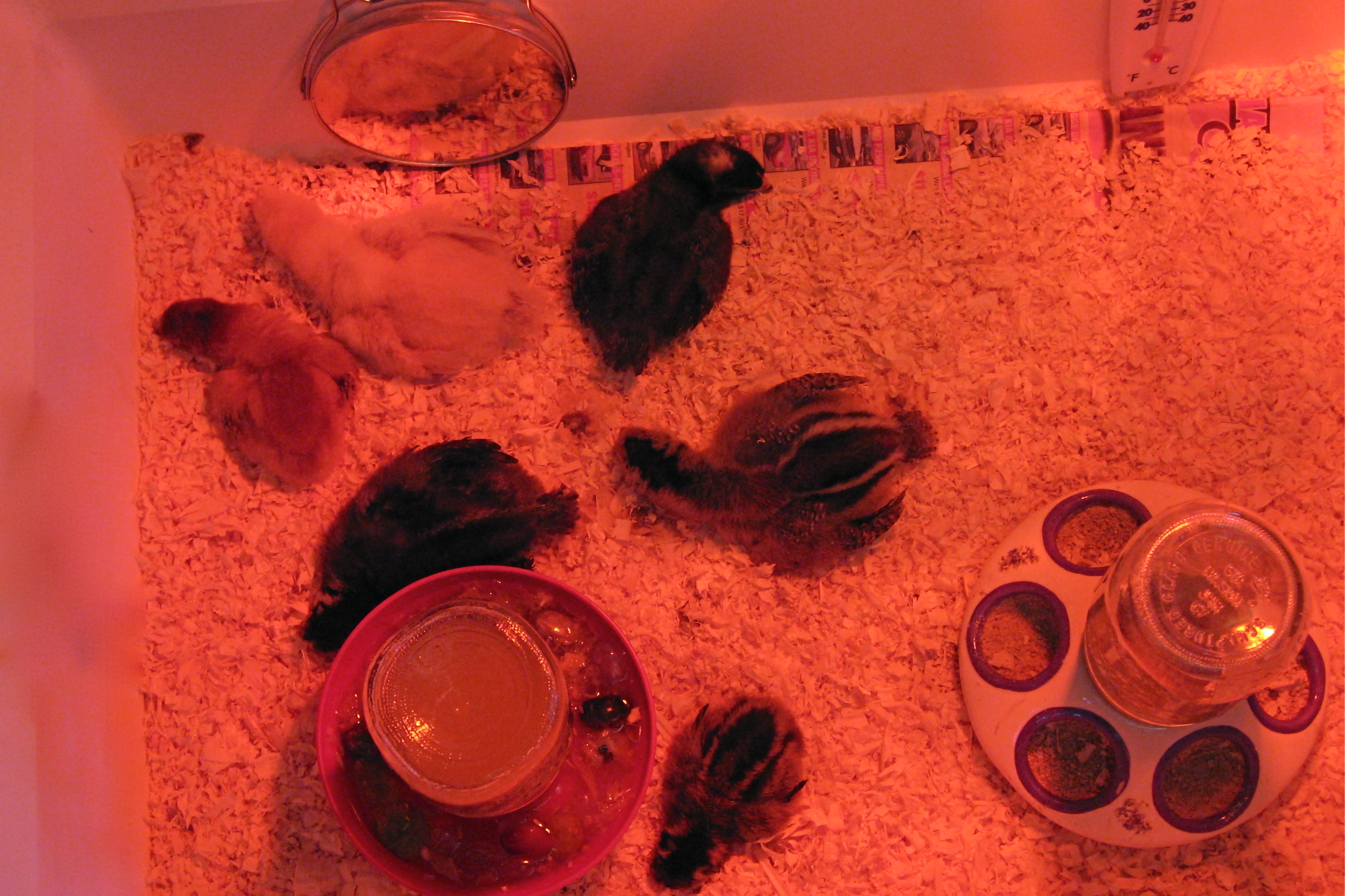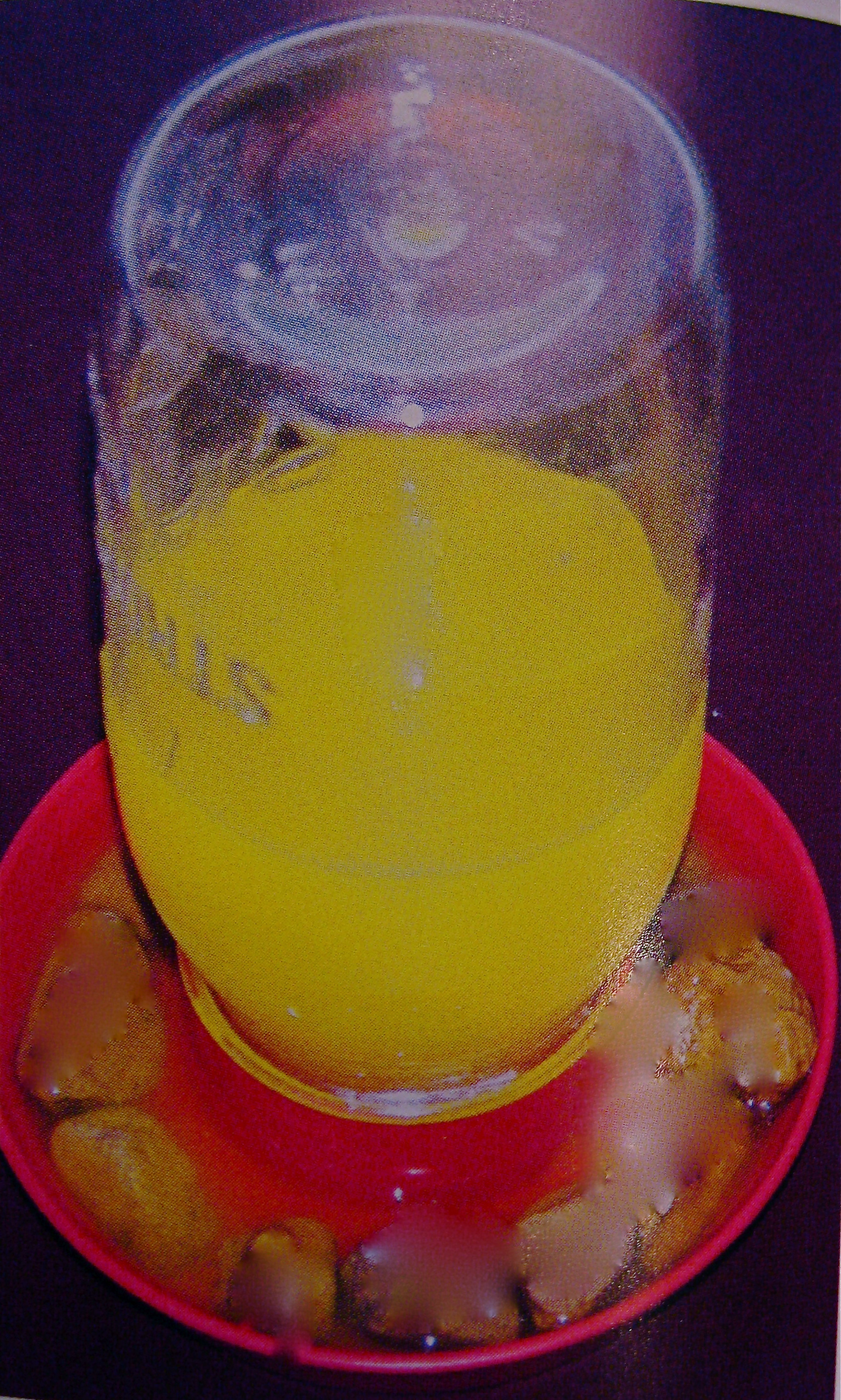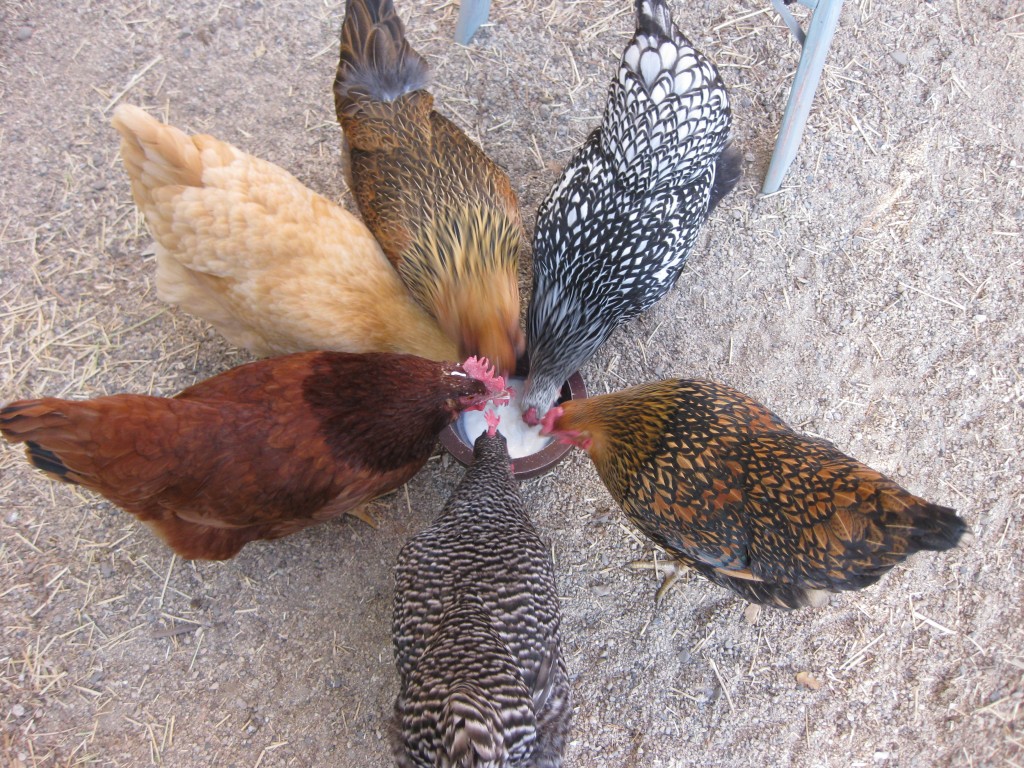
Chicks grow from tiny fluffy balls to egg-laying hens in five months. It is amazing how their little bodies turn chicken feed into feathers, muscle, and energy. It is important that they’re fed the highest quality feed to meet their needs. While we feed our hens scraps from the kitchen and a handful of cracked corn each day to supplement their diet (and make them happy), we were careful to have the chicks stick to the recommended diet (with a few healthy exceptions).
Feed companies spend millions researching and preparing mixtures that provide optimum support for growing chicks. Most feed stores carry the proper mix for your young chicks. It is called “starter”. It should have enough protein, carbohydrates, and thirteen vitamins to support growth. Vitamins will help chicks build strong bones and healthy blood cells, and fats to provide energy and absorption of fat-soluble vitamins. Unless you wish to feed a vegetarian diet to your animals, don’t try to mix your own feed. Use a commercial chick starter for the first 6-8 weeks.
Commercial feed comes with medication to prevent the dreaded coccidiosis, an intestinal disease that interferes with nutrient absorption. You shouldn’t need a medicated starter if you raise your chicks before warm, humid weather allows coccidia to flourish. Your decision of whether or not you choose to use a medicated starter for chicks should be based on the size of your flock (a handful of chicks raised in a clean brooder are less likely to be infected) and the condition of the environment. If you have no adverse feelings about using medication in food and want to be on the safe side, I recommend you use the medicated starter. If you are raising poultry for meat, there are “natural” commercial feeds available.
Even chicks like treats. From about a week on, we gave our chicks some treats each day, to keep them active, and to relieve boredom. Yes, even little minds get bored. They were fed tiny portions of shredded apples, a cooked egg yolk, a pinch of oatmeal sprinkled in their litter, and a bug or two we brought in from outdoors. Do not supplement their diet to the extent that they ignore their food. This could bring on ill-health.
At about six weeks you can slowly introduce a “grower” mixture into your chick feed. This feed will help them put on weight that hens need to begin laying and that fryers need to be……well, to be eaten.

Water is such an important part of a chick’s diet. I just can’t ignore it in my writing about feed. When chicks first arrive, they often have been without water for 1-3 days. Their little bodies have lived off the yolk sac that was absorbed into their bodies before hatching. When you bring your chicks home, give them a little water with a dropper or fingertip. A drop or two will revive them. Some people use a mixture of a few tablespoons of sugar in the water for the first few days to give the chicks energy and encourage hydration. Even chicks like sweets. Show them where the waterer is located in the brooder and dip each beak into it so they will know where to go when they are thirsty.
If you are worried about dehydration, commercial electrolytes (available in feed stores) can be added to the water the first week. Beware, this mixture can make chicks hyperactive so use it for a few days only, then fill waterers with fresh water.
For a handful of chicks, inexpensive feeders and waters with quart jars attached can be used until the chicks are ready for their permanent home outdoors. If you use cedar chips in the bottom of your brooder, you may want to raise the waterer up an inch or two (no further than shoulder height of your chicks) on a paver, as the chips tend to get in the waterer, preventing the chicks from access to drinking properly. We put little pebbles in the waterer to prevent the chicks from standing (and invariably pooping) in it. It is essential that they have fresh, clean water to prevent diseases. This requires constant monitoring.
Scrub the feeders and waterer once a week with bleach. Keep the brooder clean and feed your chicks quality food. Healthy chicks are happy chicks. It seems like overnight these precious little birds turn into beautiful egg-layers.



Hi I would like to know how long before my hens start laying again after having chickens.
I haven’t had a lot of experience with raising chicks with a hen, Kay, so I’m not much help here. Chickens in the wild have a natural cycle of about 30 days of laying, 21 days of setting on the eggs, then about a month of keeping her chicks warm and safe. Some hens stay with chicks longer than others. I would guess that soon after she is “done” with her chicks, she will start laying again.
I’ve found the different breeds have different habits. Hens like leghorns and RIR and Barred Rock have been bred out of their natural instincts and have a different laying pattern, producing more eggs between setting. Chickens are so interesting, aren’t they? Let us know what your hen does.